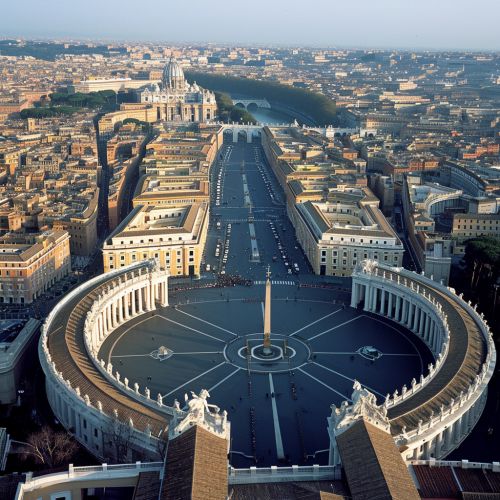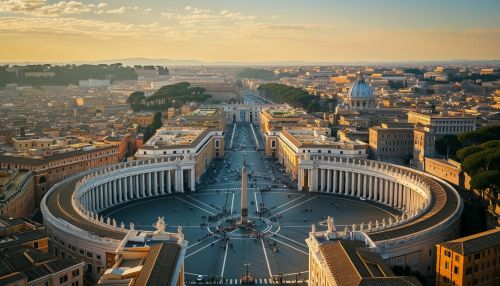Pope
Introduction
The Pope is the Bishop of Rome, a position that makes him the world leader of the Roman Catholic Church and the spiritual successor to Saint Peter. The Pope is regarded as the Apostolic successor to Saint Peter, who was one of the twelve apostles of Jesus and, according to tradition, was the first Bishop of Rome. The Pope serves as the central figure of the Catholic Church across the globe, and his spiritual leadership is considered vital to the practice of Catholicism.
History
The papacy has a long and complex history, beginning with Saint Peter and continuing through more than 260 popes to the present day. The role of the Pope has evolved over centuries, influenced by historical, cultural, and political factors. The Pope's authority and influence have varied widely, from periods of great power, such as during the Middle Ages when the Pope had both religious and political control, to times of conflict and schism within the Church.
Early Papacy
The early papacy, from the 1st to the 7th centuries, was characterized by the spread of Christianity and the consolidation of papal authority. The first bishops of Rome, the predecessors to the Pope, were pivotal in establishing Christian communities in the Roman Empire. The title "Pope", meaning "father", was originally used for all bishops but eventually became associated exclusively with the Bishop of Rome.
Middle Ages
During the Middle Ages, the papacy became a significant political power. Popes crowned emperors, deposed kings, and launched Crusades. The Pope also played a crucial role in the spread of Christianity throughout Europe. The papacy's political involvement, however, led to conflicts with secular rulers and divisions within the Church, culminating in the Western Schism.
Modern Era
In the modern era, the papacy has focused more on spiritual leadership, promoting peace and dialogue among nations, and advocating for the poor and marginalized. The Second Vatican Council, convened by Pope John XXIII in the 1960s, brought significant changes to the Church, including a shift towards greater engagement with the modern world.
Role and Responsibilities
The Pope's primary role is to serve as the spiritual leader of the Roman Catholic Church. He is responsible for upholding Church doctrine, making authoritative interpretations of the Bible, and guiding the moral and religious life of the Church's members. The Pope also has administrative duties, including the appointment of bishops and cardinals, and the governance of the Vatican City State.
Spiritual Leadership
As the spiritual leader of the Catholic Church, the Pope provides guidance on issues of faith and morals. He is considered infallible when making ex cathedra statements – declarations made from the seat of authority on matters of faith or morals. This doctrine of Papal Infallibility was formally defined in the First Vatican Council of 1870.
Administrative Duties
The Pope oversees the governance of the Church and the Vatican City State. He appoints bishops and cardinals, who assist him in his duties. The Pope also convenes synods and councils to discuss and make decisions on important Church matters.
Papal Election
The Pope is elected by the College of Cardinals in a process known as a papal conclave. This process has evolved over centuries, with the current rules established in the Apostolic Constitution Universi Dominici Gregis issued by Pope John Paul II in 1996.
Papal Symbols
There are several symbols associated with the papacy, including the Papal Tiara, the Keys of Heaven, the Papal Cross, and the Fisherman's Ring. These symbols represent the Pope's authority and his spiritual and temporal powers.
Controversies and Criticisms
The papacy has faced various controversies and criticisms throughout its history, ranging from allegations of corruption and abuse of power to doctrinal disputes. These issues have led to reforms within the Church and changes in the role and image of the papacy.
Conclusion
The Pope, as the leader of the Roman Catholic Church, holds a position of significant religious and historical importance. His role has evolved over centuries, shaped by religious, political, and cultural changes. Despite controversies and challenges, the Pope remains a central figure in the spiritual lives of millions of Catholics around the world.


